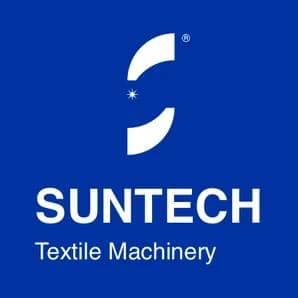In clothing production, knitted fabrics are widely used in T-shirts, underwear, sportswear and other products because of their softness, comfort and strong ductility. However, this type of fabric also has many problems before cutting due to its own characteristics, the most typical of which are curling, shrinkage and unstable size. If it is cut directly without being relaxed, it will not only affect the accuracy of the size of the finished garment, but may also cause waste or even rework.
In order to ensure the cutting accuracy and clothing quality of knitted fabrics, fabric relaxation has become an indispensable link. This article will analyze in detail the importance of knitted fabric relaxation, the causes of common problems and solutions, to help garment factories optimize the front-end process and achieve stable and efficient production.
Why are Knitted Fabrics Prone to Curling and Shrinking?
Knitted fabrics are different from woven fabrics. Their structure is made of continuous coils intertwined. This structure determines that knitted fabrics have higher elasticity and softness. But because of this, knitted fabrics will be in a "tense" state after weaving, the edges of the fabrics are prone to curling, and the whole piece of fabric may also shrink in size due to changes in tension.
In addition, knitted fabrics are stretched or squeezed during transportation, dyeing, finishing, and storage, resulting in internal stress accumulation. Once these stresses are released after cutting or processing, problems such as curling of the edge of the fabric and changes in length and width may occur, seriously affecting the sewing quality and size consistency of the finished garment.
Production Hazards Caused by Unloose Fabric
Many garment factories may ignore the pre-treatment process during peak production and directly use unrelaxed fabric for cutting. It seems to save time, but in fact it has buried many hidden dangers:
Unstable size: After cutting, unrelaxed fabric is prone to shrinkage after sewing or washing, causing the finished garment to be smaller or deformed;
Increased difficulty in sewing: Curling affects the flatness of the fabric, and additional flattening is required during sewing, reducing sewing efficiency;
Increased rework rate: Clothes are unqualified due to shrinkage and curling, increasing the cost of repair and fabric use;
Decreased customer satisfaction: Quality fluctuations affect brand image and customer repurchase rate.
Fabric Relaxing Process: the Key to Solving Knitted Fabric Problems
Fabric relaxation, also known as "loosening" or "releasing", is the process of spreading the fabric naturally and releasing tension through special equipment to restore the fabric to its natural state. Especially for knitted fabrics with high elasticity and high gram weight, the loosening process is particularly important.
Advantages of Professional Fabric Relaxing Machines
Remove tension and restore size
The loosening machine relaxes the fabric naturally without external force through roll-to-roll or flat loosening, effectively releasing the tension accumulated during weaving and dyeing, and the length and width of the fabric tends to be stable.
Prevent shrinkage and deformation
The relaxed knitted fabric will no longer shrink significantly during subsequent washing or ironing, ensuring the accuracy of the garment size from the source.
Improve the flatness of the fabric
Automatic deviation correction, tension adjustment and other functions ensure that the fabric is spread flat, providing ideal processing conditions for the cutting machine.
Save labor and improve efficiency
Compared with manual loosening, the equipment operation is simpler and more standardized, avoiding human errors and saving labor.
Which Garment Factories are Suitable for Configuration?
Although all garment companies using knitted fabrics should pay attention to the fabric relaxing process, the following types of factories are particularly recommended to be equipped with professional fabric relaxing equipment:
Mid- to high-end brand OEM factories: strict requirements on the size and quality of finished garments;
T-shirt/sportswear and other bulk production factories: high requirements for batch stability;
Flexible production factories: frequent changes in fabric types require fast and efficient pre-treatment;
Fabric traders/suppliers: provide pre-treatment services for downstream customers.
The Significance of Fabric Relaxing
In traditional cognition, fabric relaxing seems to be just a "preparation", but in actual production it plays a fundamental role in determining the quality of finished garments. It is not only the first step in fabric processing, but also the starting point of the entire cutting process.
A stable fabric width and a precise size mean higher sewing efficiency, lower rework rate, and better customer reputation. Controlling quality from the source is the real effective cost control and brand guarantee.
Conclusion
In today's pursuit of high quality, low loss, and fast delivery, every step of the garment factory process cannot be ignored. Although the relaxation of knitted fabrics is not conspicuous, it is crucial. Equipped with a suitable fabric relaxing machine, not only can enterprises say goodbye to curling and shrinkage problems, but also can fundamentally improve cutting accuracy and garment qualification rate.
If your factory is facing problems such as unstable size, frequent rework, and low efficiency, perhaps it is time to pay attention to this "inconspicuous but critical" equipment.







